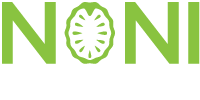History of Noni
Noni was first discovered and used by man long before recorded history in Southeast Asia and the subcontinent, when ancient Indian medicine men began examining the natural world to find plants good not only for food, but to treat disease and otherwise benefit their health. They developed a medical system of using plants and natural treatments to influence their health and called it Ayurveda, Sanskrit for “the science of life.” A highly advanced system of natural medicine, Ayurveda is still practiced today.
Noni was considered a sacred plant in Ayurveda and is mentioned in ancient texts as Ashyuka, which is Sanskrit for “longevity.” Noni was noted to be a balancing agent, stabilizing the body in perfect health. When the time came for the brave explorers of the subcontinent to leave their old world behind, they took noni with them as an essential element in the establishment of their new island paradise.
When Europeans began exploring the islands of the South Pacific in the late 1700s, they made note of the use of noni among the native people.[1] Captain James Cook’s own journals make mention of his observation of the island natives using noni.[2]
During World War II, U.S. soldiers based on Polynesian islands were instructed in their field manual that noni was recognized as a safe food staple to eat to sustain their strength.[3]
Today, millions the world over are discovering the health balancing properties of this once hidden island secret.
References
- Sturtevant EL. Sturtevant’s notes on edible plants. New York: JB Lyon Co., 1919.
- The Journals of Captain James Cook on his voyages of discovery, edited by J. C. Beaglehole, Cambridge, Published for the Hakluyt Society at the University Press, 1955-1974. 4 vols.
- Emergency Food Plants and Poisonous Plants of the Islands of the Pacific, Army technical manual TM10-420, 1943.

